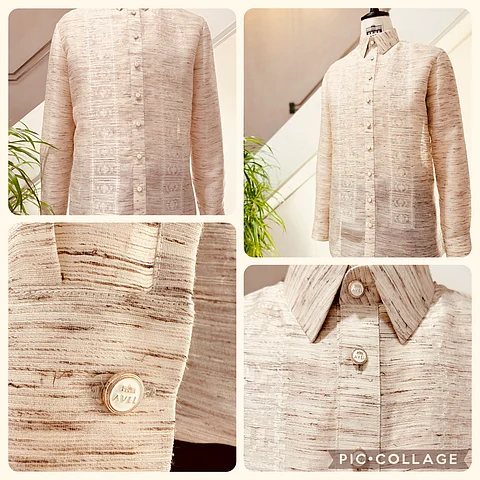
- NEWS
- the EDIT
- COMMENTARY
- BUSINESS
- LIFE
- SHOW
- ACTION
- GLOBAL GOALS
- SNAPS
- DYARYO TIRADA
- MORE

In a striking example of how tradition and innovation can meet, seasoned designer Avel Bacudio took to social media to highlight one of the country’s most fascinating textile breakthroughs: a Barong Tagalog made from saluyot fibers.
From vegetable to fabric
Saluyot, or Corchorus olitorius, is more commonly known to Filipinos as a leafy vegetable often used in local dishes. But beyond the kitchen, researchers at the Philippine Textile Research Institute (PTRI) have found a way to transform this humble plant into a source of sustainable fiber.
Through a specialized process, saluyot fibers are spun into yarns—often blended with polyester—to produce textiles. These blends, such as 80/20, 70/30, and 60/40 polyester-saluyot ratios, yield fine, smooth, and blemish-free fabrics. With yarn counts ranging from 25-29Ne, the resulting textiles are not only suitable for garment manufacturing but are also being explored for home furnishings like curtains, beddings, and table linens.
Beyond fashion: Expanding possibilities
The potential of saluyot does not stop at apparel. PTRI has been studying its applications in industrial products such as ropes, nets, and even geotextiles for soil erosion control. Research is also underway to explore saluyot-cotton blends, which could increase the natural fiber component in fabric production—making it a more sustainable and eco-friendly alternative to synthetic-heavy textiles.
By spotlighting saluyot as a viable textile, Bacudio not only champions Filipino ingenuity but also redefines how a traditional attire like the Barong Tagalog can evolve. What was once just a vegetable grown in rural backyards now carries the promise of global recognition for Philippine textiles.
Known in other regions as jute, ewedu, or lalo, saluyot represents more than just a new fabric source. It is a symbol of resilience and reinvention—qualities that define both Filipino fashion and the Filipino spirit.
The Barong Tagalog in the photo designed by Avel Bacudio is a refined piece that perfectly merges tradition with innovation.
It features a long-sleeved, button-down silhouette with a structured collar, staying true to the timeless elegance of the national attire. The fabric is subtly textured with delicate striations in soft, natural tones, giving it a modern yet organic feel. Running vertically along the front panel are woven embroidered patterns, providing the classic barong detail but with a cleaner, minimalist approach.
What makes this creation remarkable is its material: it is crafted from saluyot fibers—a sustainable textile innovation developed by the Philippine Textile Research Institute (PTRI). The saluyot fabric results in a smooth, lightweight, and breathable finish, proving its potential as both formal wear and eco-conscious fashion.
The overall look is sleek, understated, and contemporary—honoring the barong’s cultural heritage while championing Filipino ingenuity in textile development.
With Bacudio’s advocacy and PTRI’s pioneering research, the Barong Tagalog woven with saluyot is no longer just a design experiment—it is a statement of sustainability, culture, and national pride.
